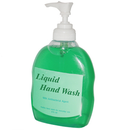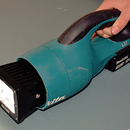Introduction: Coin Tumbler Printer Hack
A Tumbler is use for cleaning or polishing small parts, coins or stones. I need one because Ive been doing a bit of relic hunting and Im finding lots of coins. Shop keepers will often refuse dirty coins and they are quite difficult to clean after they haven been in the ground for a few years.
This should only be used on modern coins or coins that have little value, as collectors of old coins will tell you they rather their coins dirty, and is going to be worth a lot more to a collector as it is than if you clean it.
My advise is if you don't know the coins value leave it alone.
Shown in the photos are some before and after shots of coins Ive found, the 1 and 2 cent pieces are obsolete in Australia (from 1994) and are now starting to be collectable. They can be worth up to $3 each depending on condition and year, which is a 30,000% increase in value, sounds great but is still only 3 bucks.
Also shown is a pre-decimal six pence which are 50% silver again worth about $3. The other coins are current and can be spent.
Step 1: Strip Out Your Printer
- Cheap and nasty dead printer
- Torques head screw drivers
- Hot glue
- Soldering iron
- Coffee jar or similar container with a wide mouth
- Jig saw
- A plug pack (maybe)
Ive used a printer with a scanner on top, this is a cheap and nasty thing poorly constructed and cost more to replace the ink cartridges than the printers worth. this one is dead.
You need to strip out all the parts so you just have an empty case. It may require a torques head screw driver.
You also need to get the right type of printer the more expensive ( quality printers ) have steppers motors and are not suitable for this project.
Carefully remove the lid, and top cover and unscrew the larger parts as they come out in units. there is no need to unscrew everything just enough screws to to empty the case of all the major parts.
Step 2: Refit the Motor and Rollers
The first step is to refit the roller as shown, this will screw straight back in from where it came from.
I had hoped to use the printers power supply to run the rollers but, I could not get it to work. It is probably why the printer was thrown out in the first place as the unit was dead.
I had an old 12 volt dc plug pack which I wired up to the motor instead which seems to work just fine, it and the motor stay cool even when run for 2 or 3 hours.
The lead from the plug pack was cut and the 2 wires soldered on to the motor.
There is another set of roller in a plastic case that Ive use to support the coffee jar. I just cut the case down with a jig saw, so that it would fit next to the drive roller.
The plastic is very flimsy so care need to be taken not break anything, and a little support piece was cut out of scrap and place near the center of the black case.
The rollers need to be parallel and about the same height so its worth spending a bit of time checking that its all straight and square. The secret to getting a good result with hot glue on plastic is to use a good a good quality glue stick and get the glue gun really really hot, let it heat up for 20 minutes or even more.
I then just hot glued the roller in place.
Step 3: Modifing the Case and Refitting
The case just needs the to have the glass removed from the top and a hole cut in the base of the scanner. The glass is held in with double sided tape and can be levered out without too much effort. If its really stuck heating the glass up with a hair dryer will help.
The base is marked out and a hole cut with a jig saw, before been reassembled. Tumblers can be quite noisy and it is surprising how much slamming the lid on it cuts down the amount sound coming out of the machine.
Step 4: The Container
I Just split a piece of rubber hose down the middle and use silicon sealer to stick the hose to the inside of the jar.
You will also need some sort of media for the coins to rub against, and knock off the dirt. My first thought was lead shot, but its hard to get, as shooters in Australia have been using steel shot for some years due to environmental concerns. I found some lead on one of my relic hunting trips so I chopped it up added some water and baking soda and tried that. It seem to work ok for lightly soiled coins but didn't really clean the really badly tarnished coins. I am also a bit worried about the toxic nature of lead as the waste water looked very grey and nasty.
A friend suggested that lead in a tumbler works well for making gunpowder,
So I tried a few other media, at the moment Im using glass beads and baking soda, I would like to try stainless steel shot but its not cheap. I might try chopped up stainless mig wire.
- Sand, water....... very harsh makes coins look like they have been sand blasted good for coins your going to spend, nuts and bolts etc
- Lead off cuts, baking soda, water....... lightly tarnished coins, potentially toxic
- Lead off cuts, soapy water.........Not much better than washing coins in soap and water.
- glass beads, water, baking soda....... nice result, badly tarnished coins however take hours to clean.

Finalist in the
Jury Rig It! Contest

Participated in the
Instructables Green Design Contest

Participated in the
Epilog Challenge V













